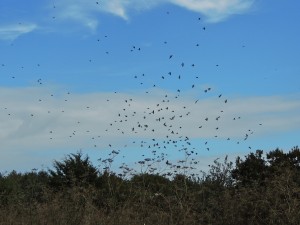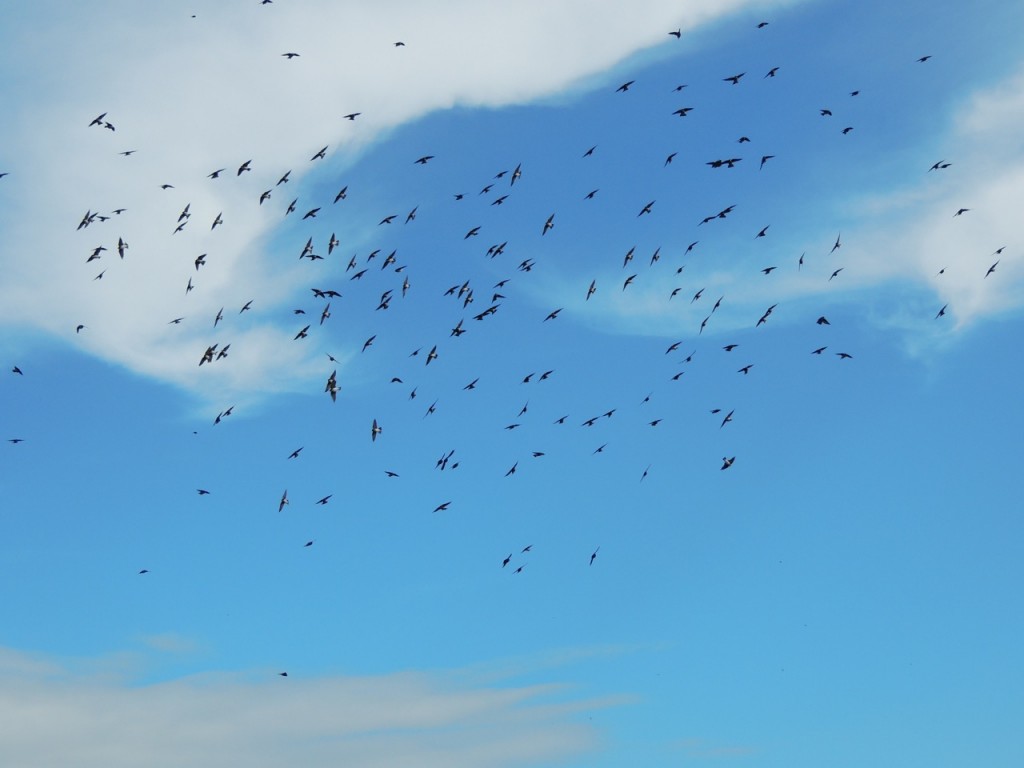October 13 2014. Chesapeake Bay Bridge-Tunnel, Virginia. The Eastern Seaboard of the USA can be characterised in any number of ways, for millions it’s somewhere to live and work, for birders it’s the Atlantic Flyway; a migration pathway followed by millions of birds. I spent a little time today on one of the hotspots along the Atlantic Flyway, on the southern tip of the Delmarva Peninsula, a long stalactite of abundantly fertile land that separates the teeming waters of Chesapeake Bay from the vast spread of the Atlantic Ocean.
The thing about this long finger of land (and Cape May, its little brother to the north), is that it’s a great birding destination. Most of the Delmarva Peninsula is in Maryland but the southern tip lies in Virginia, not that it makes much difference to the flyway. Away from the Atlantic or Chesapeake Bay shorelines, the land is intensively farmed on wide, flat fields of cotton, beans and sweet potatoes. Dense stands of oak, Sweet-gum and Tulip Trees, impenetrably tangled with vines and briars, encircle the fields, making them suffocatingly hot for many long summer weeks.
 This southern tip is alive now with migrating birds. I watched large passing flocks of Tree Swallows, hundreds strong and tailed by hopeful Merlins, Cooper’s and Sharp-shinned Hawks. At lower levels I could hear small birds chipping and calling in the bushes and trees and just above the horizon were groups of drifting Turkey Vultures and Black Vultures.
This southern tip is alive now with migrating birds. I watched large passing flocks of Tree Swallows, hundreds strong and tailed by hopeful Merlins, Cooper’s and Sharp-shinned Hawks. At lower levels I could hear small birds chipping and calling in the bushes and trees and just above the horizon were groups of drifting Turkey Vultures and Black Vultures.

But I set out to tell of the Peregrine Falcons seen today. The first one passed low over our car and was noteworthy simply because, like all Peregrines, it flew as if it owned the skies; the second one, much later, was quite a different experience.
The tip of the Delmarva Peninsula is connected to mainland Virginia by a twenty-and-a-bit miles long bridge and tunnel combination; mostly bridge. The bridge-tunnel links the north and south shores of the mouth of Chesapeake Bay where it opens to the Atlantic Ocean. Needless to say it is a very commercially important and strategically vital waterway. On a fine day it’s an easy drive, a touch tedious at times, but if you like ocean views and the thought of the engineering task that made it all possible, it’s a rather thrilling experience; but I imagine an approaching hurricane makes it a quite different story. As we drove across, a steady east wind was blowing and Great Black-backed Gulls were riding on the ridge of wind deflected upwards by the bridge structure. To drive north and be passed by a southbound gull surfing a wave of rising air just a few feet away and at eye-level was to make me wish I could stop for a dramatic photo. But while such a picture could be magnificent if done well, stopping to get it would be dangerous and thoroughly illegal.
But the greatest picture, held only in my mind’s eye, was of a Peregrine Falcon, my Bird of the Day, seen streaking south along that same pathway of rising air and, I like to imagine, looking each car driver in the eye as they passed.